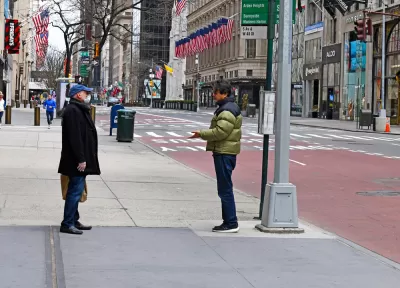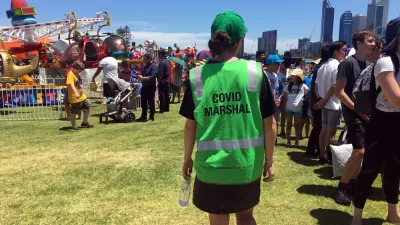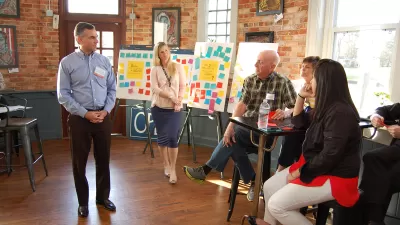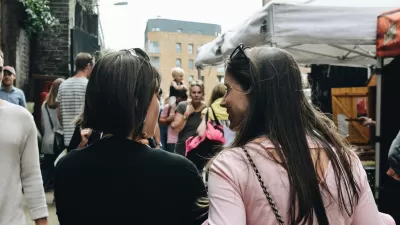Organizations blend past and present strategies to stay in touch with community members.

When COVID-19 began spreading across the country earlier this year, and Americans were ordered to stay at home and socially distance, they turned to technology. Since then, many aspects of everyday life have become virtual–starting with work and school and eventually including traditionally in-person events like baby showers, birthdays, and weddings; cooking and fitness classes; conferences; concerts and plays; and even dance parties. A Pew Research Center survey conducted in early April found that roughly 54 percent of U.S. adults said that the internet became essential for them during the pandemic.
As the pandemic pushed people to rely more heavily on technology to stay connected, it also made it undeniable how much more work needs to be done to resolve the digital divide. In a report published last year, the Federal Communications Commission estimated that there were 21 million Americans who lacked broadband access at the end of 2017. Reliable high-speed internet, as defined by the FCC, is having download speeds of at least 25 megabits per second (Mbps) and upload speeds of at least 3 Mbps. In other words, having high-speed internet access is a luxury. This has become especially apparent in the country’s education system. It’s estimated that more than 9 million schoolchildren lack access to high-speed broadband internet at home. According to the Pew Research Center, those who are less likely to have broadband service at home include racial minorities, older adults, rural residents, and those with lower levels of education and income.
Closing the digital divide requires reliable and affordable internet, adequate devices, and digital literacy skills. Outside of schools and libraries, nonprofit organizations are often the bridge for the digital divide in their communities. However, that work has become more challenging as face-to-face gatherings have been restricted. Nonprofits were forced to ...
FULL STORY: Crossing the Digital Divide During COVID

Maui's Vacation Rental Debate Turns Ugly
Verbal attacks, misinformation campaigns and fistfights plague a high-stakes debate to convert thousands of vacation rentals into long-term housing.

Planetizen Federal Action Tracker
A weekly monitor of how Trump’s orders and actions are impacting planners and planning in America.

In Urban Planning, AI Prompting Could be the New Design Thinking
Creativity has long been key to great urban design. What if we see AI as our new creative partner?

King County Supportive Housing Program Offers Hope for Unhoused Residents
The county is taking a ‘Housing First’ approach that prioritizes getting people into housing, then offering wraparound supportive services.

Researchers Use AI to Get Clearer Picture of US Housing
Analysts are using artificial intelligence to supercharge their research by allowing them to comb through data faster. Though these AI tools can be error prone, they save time and housing researchers are optimistic about the future.

Making Shared Micromobility More Inclusive
Cities and shared mobility system operators can do more to include people with disabilities in planning and operations, per a new report.
Urban Design for Planners 1: Software Tools
This six-course series explores essential urban design concepts using open source software and equips planners with the tools they need to participate fully in the urban design process.
Planning for Universal Design
Learn the tools for implementing Universal Design in planning regulations.
planning NEXT
Appalachian Highlands Housing Partners
Mpact (founded as Rail~Volution)
City of Camden Redevelopment Agency
City of Astoria
City of Portland
City of Laramie





























